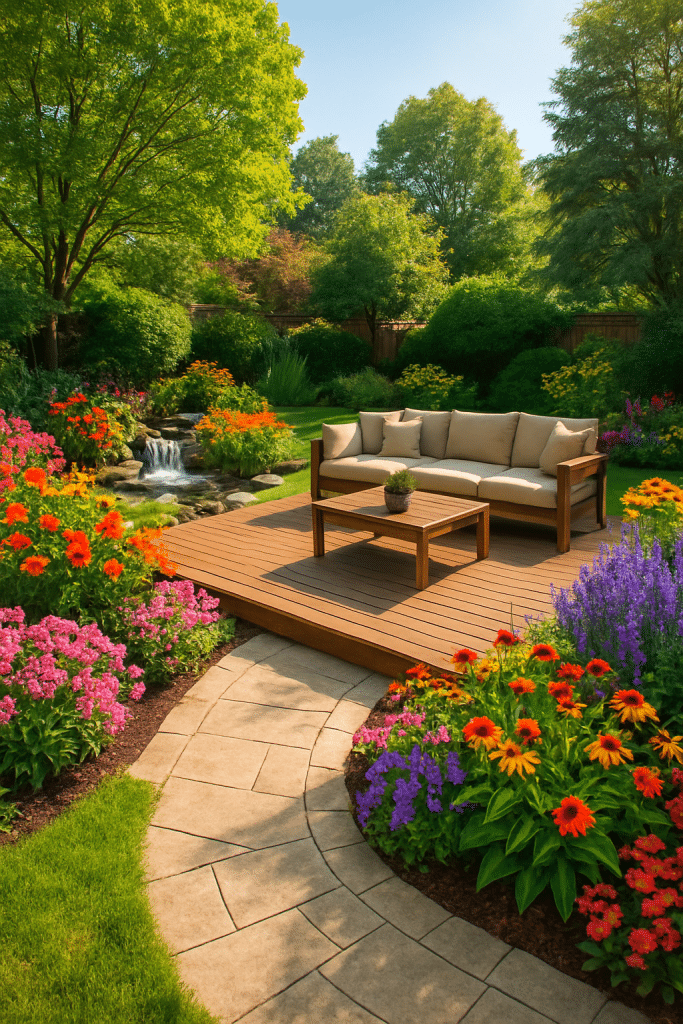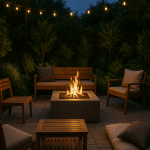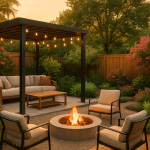When it comes to transforming your backyard into a stunning outdoor living space, having creative and practical backyard landscaping ideas is essential. Whether you have a small patch of land or a sprawling garden, thoughtful landscaping can elevate your home’s appeal and functionality. I know firsthand how overwhelming it can be to envision and execute a backyard makeover, but trust me—it’s worth every minute of planning and effort. In this comprehensive article, I’m taking you through five standout backyard landscaping ideas that embrace everything from maximizing usable space and hardscaping elements to sustainable planting and innovative water features. Along the way, I’ll share expert insights, real-world examples, and actionable tips to help you craft your dream outdoor oasis.
We’ll cover foundational steps like assessing your space and defining your purpose, delve into designing multi-use zones and integrating privacy or shade, and finish strong with inspired ideas for entertaining and low-maintenance sustainability. So, whether you’re a gardening novice or a seasoned outdoor designer, these backyard landscaping ideas will unlock your property’s full potential and add beauty and comfort for years to come.
Planning Your Backyard Landscape: Foundations for Success
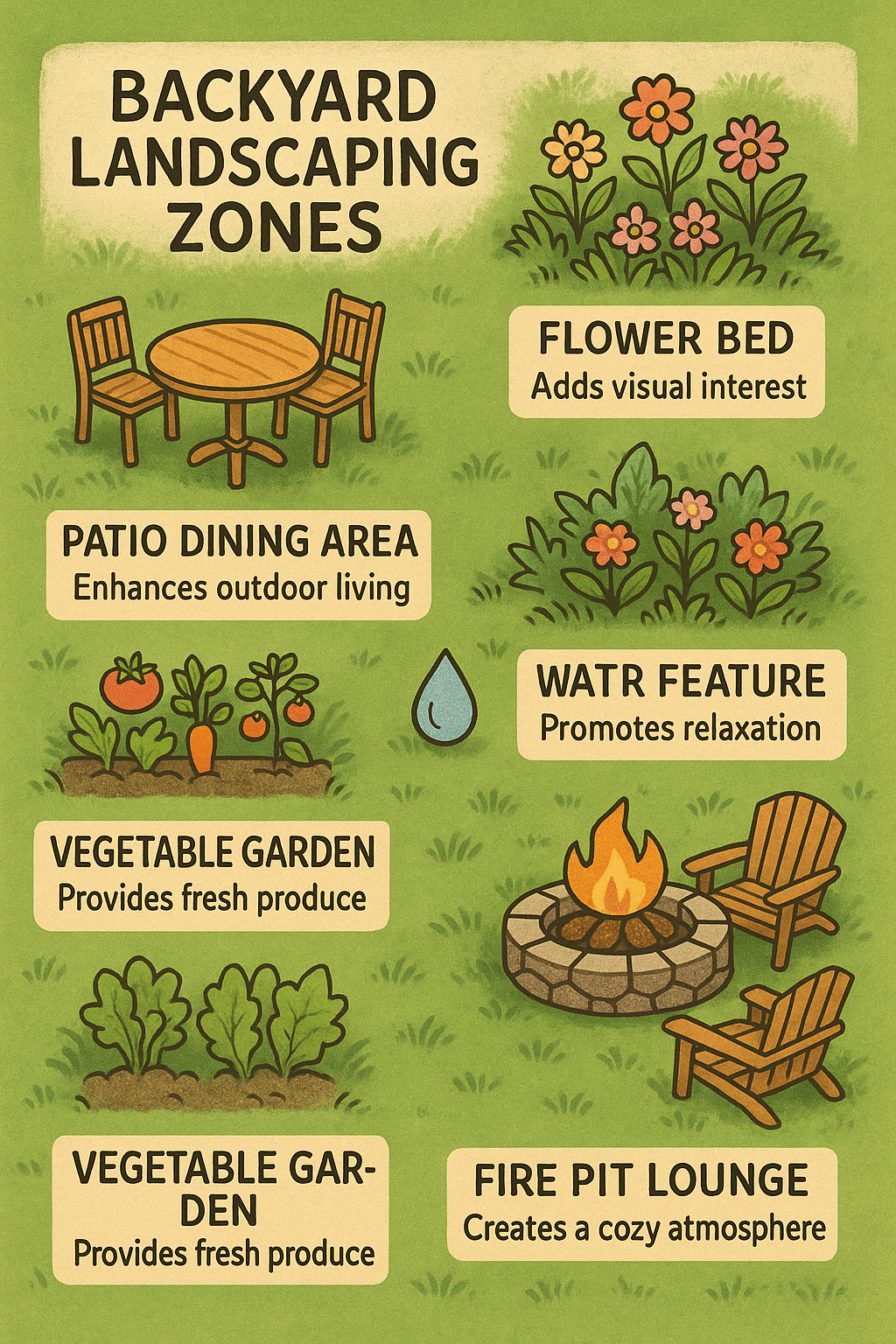
Before diving into any backyard landscaping ideas, laying a solid foundation is crucial. Smart planning saves you time, keeps costs manageable, and ensures your vision actually fits your space and needs.
Assessing Your Space: Size, Shape, and Soil Conditions
The first step is understanding what you’re working with. Measure your backyard’s dimensions carefully and note its shape—is it a tight rectangle, square, or an irregular lot? This data helps determine what kind of landscaping features will fit without overcrowding or overwhelming the area.
Equally important is the soil type. Conduct a soil test kit (available from garden centers or online) to check pH, drainage, and nutrient content. For example, clay-heavy soil might require amendments or raised beds for planting, while sandy soil needs different watering strategies.
I remember working on a friend’s backyard where the soil was extremely compacted and poorly draining. We introduced a mix of compost and organic matter to boost fertility and moisture retention, and added raised garden beds for vegetables. The transformation was remarkable, and the plants thrived.
Defining Purpose: Entertainment, Relaxation, Gardening, or Play
What exactly do you want out of your backyard? Knowing its primary function narrows down which features to prioritize. Many homeowners seek a blend of uses, so it’s wise to carve out distinct zones:
- Entertainment: Outdoor kitchens, barbecue areas, spacious patios, and fire pits shine here.
- Relaxation: Hammocks, water features, shaded seating areas, and soft landscaping make perfect retreats.
- Gardening: Raised beds, native plants, vegetable gardens, and flower beds bring your green thumb to life.
- Play: Open lawns, safe pathways, and durable surfaces work best for kids and pets.
Jot down your must-haves and dream elements to guide the rest of your landscape design decisions.
Setting a Realistic Budget and Timeline
Landscaping costs can range widely—from hundreds for DIY flower beds to tens of thousands for professional hardscaping and water features. Be upfront about how much you’re willing and able to invest. Also, factor in long-term costs like irrigation systems, lighting, or maintenance tools.
If budget is tight, consider phased projects. Tackle the backyard in stages, starting with essential infrastructure or core features, then enhancing with decorative or complex elements over time.
Keep timelines realistic too. Some plants need seasons to establish, and construction projects might get delayed by weather or supply issues. Having a buffer can help you stay calm and organized.
Maximizing Usable Space with Functional Zones
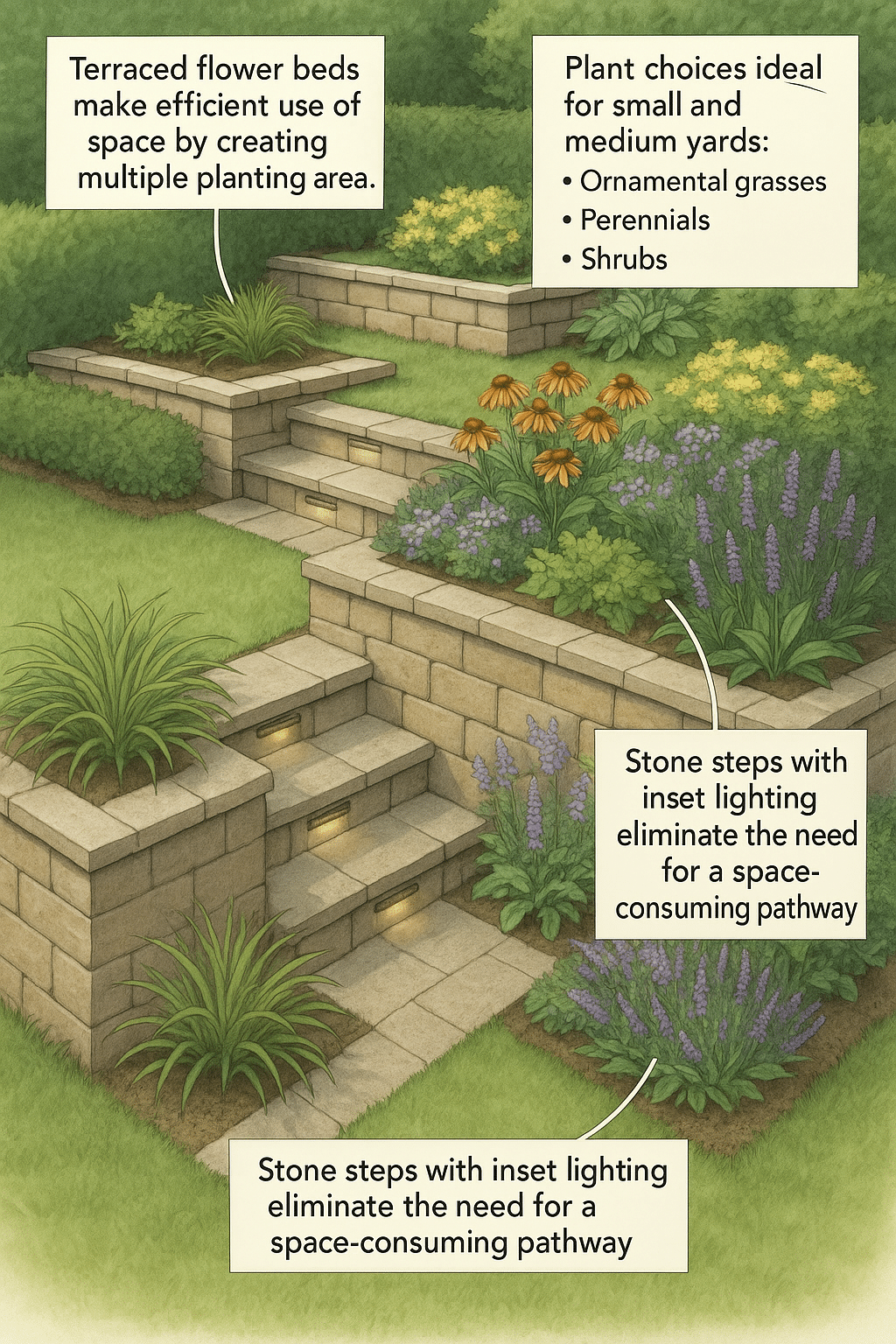
Having learned from my landscaping projects over the years, I can confirm that one of the smartest backyard landscaping ideas is creating multi-use zones. This approach maximizes every foot of your space, enhancing usability and enjoyment.
Creating Multi-Use Areas: Combining Dining, Lounge, and Garden Spaces
The key is thoughtful layout planning. For example, a dining pergola can transition to a comfortable lounge area during the evening. Raised garden beds can double as natural room dividers, separating a vegetable patch from a children’s play area.
I worked with a family who wanted both an energizing play spot for their young kids and an elegant outdoor dining area. We installed a low retaining wall planter bed that visually separated a turf play zone from a large paver patio with an outdoor kitchen. The smooth transition made the space feel cohesive without losing function.
Use rugs, lighting, and contrasting textures (like natural wood and stone) to define zones while keeping the overall aesthetic unified.
Utilizing Vertical Space: Trellises, Vertical Gardens, and Privacy Screens
If yours is a small backyard, you can’t afford to waste an inch. Vertical gardening techniques make use of walls, fences, or specially built trellises to grow flowers, vegetables, or climbers upward instead of outward.
Privacy screens made from wood, lattice, or living hedges also add vertical interest while blocking unwanted views. For instance, planting evergreen vines like star jasmine on a trellis creates a fragrant, year-round screen.
I converted my own backyard’s boring fence into a living wall with a mix of succulents and shade-tolerant ferns grafted onto modular panels. It added vibrant color, texture, and privacy without shrinking the usable floor space.
Designing Flow with Garden Pathways and Walkways
Pathways encourage exploration and provide visual guidance through different backyard zones. Materials like stone pavers, gravel, or poured concrete dictate style: rustic, contemporary, or cottage-inspired.
Ensure pathways are wide enough (usually 3 feet minimum) and consider curved routes to soften rigid backyard lines. Edging paths with solar lights or low-growing plants adds beauty and nighttime safety.
For a dreamy garden path, I recommended flagstone combined with creeping thyme. As people walk, the thyme releases a gentle fragrance—a small touch that makes the outdoor experience memorable.
Hardscaping Elements to Enhance Structure and Style
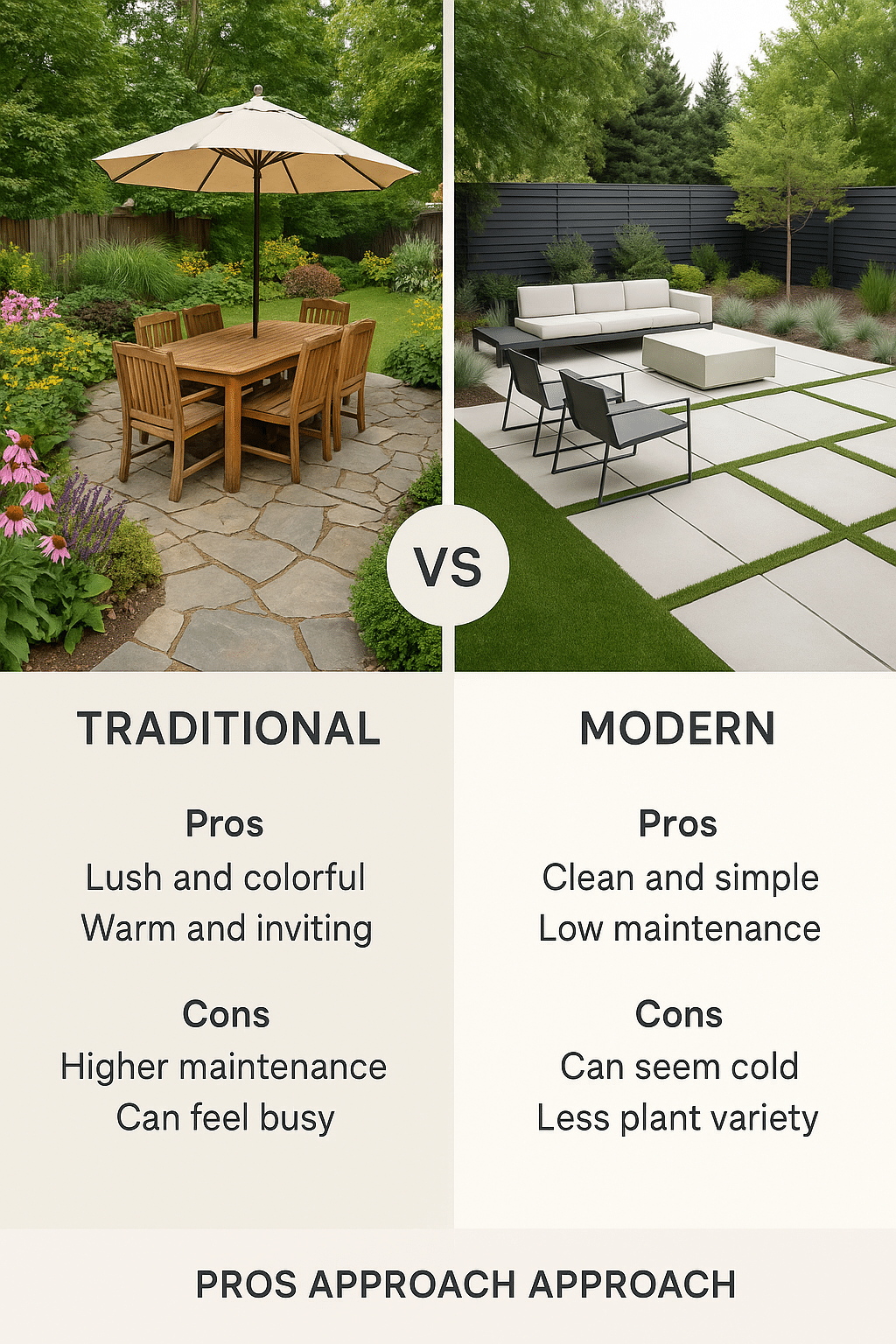
Hardscaping—the non-living components of your landscape—adds durability and framework. It also complements planting schemes and provides functional spaces for activities.
Incorporating Patios, Decks, and Outdoor Kitchens
Patios and decks form the backbone of many outdoor living areas. They can be positioned to capture sunlight, shade, or views.
Material choices impact budget and maintenance: natural stone is elegant but pricey; concrete pavers offer versatility and affordability; composite decking resists rot and insects.
Outdoor kitchens have surged in popularity. Beyond grilling, you can install countertops, sinks, pizza ovens, and refrigerators. These additions support seamless entertaining and make meal prep a joy rather than a chore.
I recall an outdoor chef who loved working in his backyard kitchen featuring granite counters, an infrared grill, and built-in storage. It transformed his cooking experience and boosted social gatherings.
Adding Fire Pits and Outdoor Fireplaces for Ambience
Few backyard landscaping ideas create instant ambience like a fire element. Fire pits or fireplaces add warmth on cooler nights, become natural gathering spots, and extend the usability of your outdoor space.
Choose between wood-burning and gas models depending on your preference and local regulations. Safety is critical—select paver or concrete surrounds and maintain clearances from flammable structures.
In one project I managed, the homeowners installed a circular retaining wall fire pit with cozy bench seating. They reported countless evenings spent toasting marshmallows and storytelling—a lovely emotional connection to the backyard.
Retaining Walls, Terracing, and Raised Garden Beds
In sloped yards, retaining walls or terraces maximize flat usable space while preventing soil erosion. Building with natural stone or concrete blocks creates durability and offers aesthetic appeal.
Raised garden beds are fantastic for soil control and easier maintenance, ideal for vegetable gardeners or flower enthusiasts. Plus, they can be designed with built-in seating or storage compartments.
In a hillside garden I redesigned, terracing allowed the family to introduce diverse planting zones and build an edible garden without losing any usable ground—a highly satisfying upgrade.
Sustainable and Low-Maintenance Planting Strategies
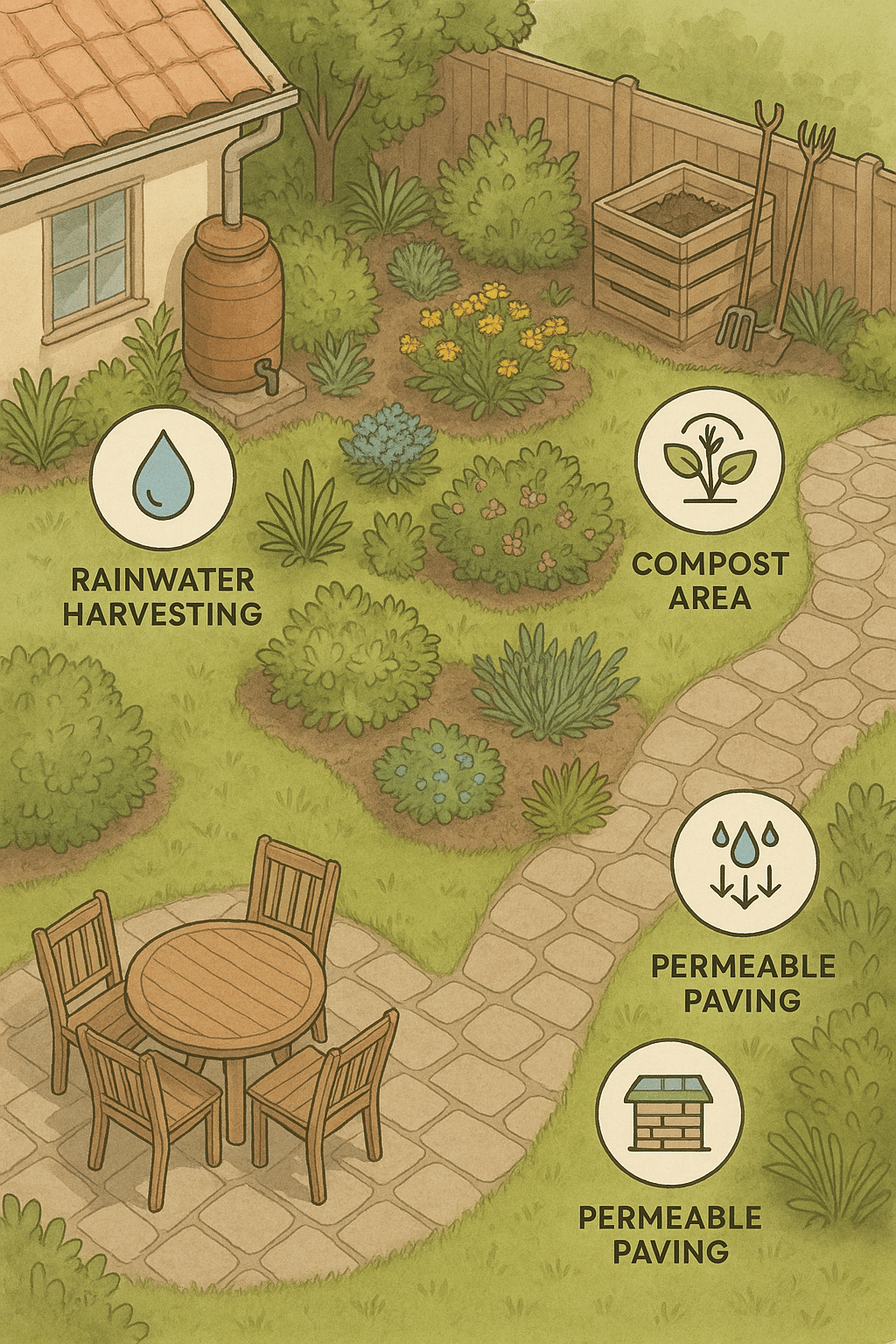
Sustainability is a growing priority. Using smart planting choices reduces water consumption, maintenance time, and environmental impact.
Choosing Native and Drought-Tolerant Plants
Native plants thrive naturally in your region’s climate and soil. They require less water and fertilizers and support local wildlife like pollinators.
Examples include coneflowers, black-eyed Susans, and ornamental grasses for temperate zones, or yucca and agave for arid areas. These species often resist pests better than non-natives.
During a consultation, I recommended a mix of native shrubs and perennials to reduce irrigation demands and create vibrant seasonal colors. The family was delighted with how low-maintenance their landscape became.
Implementing Xeriscaping Techniques
Xeriscaping focuses on water conservation by selecting drought-tolerant plants, minimizing turf grass, and optimizing irrigation. Mulching and using efficient drip systems are staples.
It’s a practical approach for regions facing water restrictions or those seeking eco-friendly gardens. Combining stone mulch with desert plants creates striking, sustainable aesthetic statements.
One homeowner transformed a thirsty lawn into a xeriscape paradise with lavender, sedum, and rosemary—beauty with no guilt about water waste.
Incorporating Edible Gardens and Raised Vegetable Beds
Edible landscapes combine ornamental and functional gardening. Raised beds enable control over soil quality and pest management, making them beginner-friendly.
Growing fresh herbs, tomatoes, lettuces, or berries invites healthier eating and reduces grocery bills. Vertical trellises for cucumbers or beans save space while adding greenery.
Our community garden project includes raised beds and native herbs, accessible to all ages, fostering bonding and sustainability education.
Creative Water Features to Enliven Your Backyard
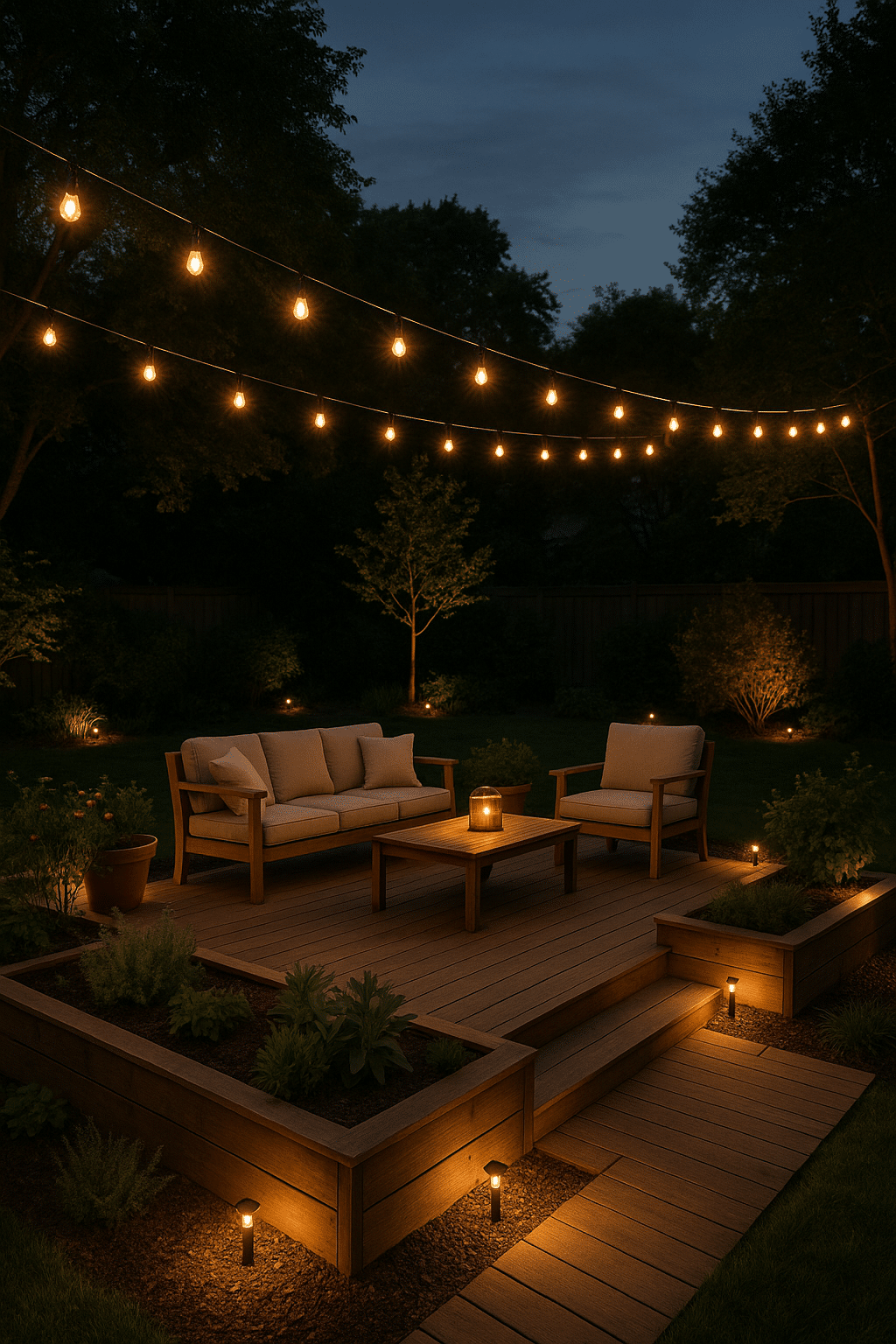
Water adds tranquility, movement, cooling effects, and visual appeal. Even small properties can incorporate tasteful water elements.
Designing Ponds, Fountains, and Small Waterfalls
Adding a koi pond or a bubbling fountain creates a serene atmosphere and audible relaxation. Choose natural stone liners and native aquatic plants for ponds to encourage biodiversity.
DIY waterfalls use recirculating pumps and stacked rocks—effective focal points that you can adjust to your backyard scale.
At a client’s home, we built a tiered waterfall over river stones spilling into a pond with native cattails. It attracted birds and enhanced peaceful evenings outdoors.
DIY Rain Gardens and Sustainable Water Management
Rain gardens channel roof runoff into planted depressions, reducing erosion and filtering stormwater naturally. This sustainable landscaping technique boosts groundwater recharge and lessens utility costs.
They work well with rain barrels and permeable paving, contributing to a holistic water-smart yard design.
If you’re handy, creating a rain garden by using native wildflowers like black-eyed Susans or milkweed offers visual delight and ecological resilience.
Enhancing Privacy and Shade for Outdoor Comfort
An inviting backyard should feel like a private retreat, shielded from neighbors and harsh sun.
Strategic Use of Privacy Screens, Fencing, and Hedges
Hedges (such as boxwoods or arborvitae) offer living fences that improve with age. For faster privacy, screens made from bamboo, lattice panels draped with vines, or modern metal work provide effective visual barriers.
Privacy solutions also improve property value and make outdoor living more relaxed.
Planting Shade Trees and Installing Pergolas
Trees like oak, maple, or magnolia provide cooling shade and add seasonal color. In smaller yards, deciduous trees add summer shade but allow winter light.
Pergolas with retractable canopies combine architectural interest and practical shelter. Climbing plants like wisteria on a pergola enhance shade with floral beauty while cooling the area naturally.
In our home, a pergola over the patio covered in trumpet vine creates a green sanctuary perfect for relaxing and entertaining during hot months.
Lighting Design to Extend Usability and Create Ambiance
Lighting transforms your backyard after dark, boosting safety and setting moods.
Outdoor Lighting Types: Path, Accent, and Ambient
Path lighting guides footsteps, accent lighting highlights trees or water features, and ambient lighting softens the entire space.
LED solar lights have become enormously popular, offering low energy costs with substantial brightness changes compared to older halogens.
Energy-Efficient and Smart Lighting Options
Smart garden lighting controlled via apps enables scheduling, color changes, and dimming—all controllable from your phone. Motion sensors improve security and save power.
The latest models combine solar and battery backup for uninterrupted performance.
Affordable and DIY Backyard Landscaping Ideas
If funds are limited, don’t worry! Many creative backyard landscaping ideas thrive on resourcefulness.
Budget-Friendly Material Choices
Using salvaged wood, recycled bricks, or gravel instead of pricey stone cuts costs significantly.
For example, broken concrete slabs from demolition can become stepping stones or retainers.
Simple Projects for Beginners
Start small with container gardens, painted pots, or pallet-based vertical gardens.
Repurposing and Upcycling for Unique Features
Old furniture repurposed as planters, tires transformed into flower beds, or jars converted into hanging lanterns add personality without breaking the bank.
Backyard Landscaping Ideas for Entertaining and Social Gatherings
Creating a backyard that caters to guests ensures lasting memories.
Designing Outdoor Kitchens and BBQ Areas
Popular features include built-in grills, pizza ovens, counter space, and weather-resistant cabinets. Consider shading, seating, and open airflow in your layout.
Flexible Seating Arrangements and Social Fire Features
Movable chairs, benches with cushions, and modular patios allow adaptation for different group sizes.
Fire pits or chimineas act as natural gathering points, extending social time into cooler evenings.
Seasonal Planning and Maintenance for Sustainable Beauty
Sustainability also involves dedicating time to seasonal upkeep.
Creating a Planting and Maintenance Calendar
Schedule pruning, feeding, watering, and season-appropriate planting for maximum results.
Seasonal Garden Care Tips and Best Practices
Mulching in fall protects roots, while spring fertilizing boosts growth. Adjust watering schedules in summer toward early mornings or evenings for efficiency.
Unique Landscaping Styles: Rustic, Cottage, Modern, and Minimalist Inspirations
Your backyard should reflect your personal aesthetic.
Blending Styles to Suit Personal Taste
Mix rustic stone paths with modern lighting for a balanced effect. Use cottage-style flowers in minimalist layouts to soften edges.
Incorporating Personal Touches and Artistic Elements
Outdoor sculptures, birdbaths, wind chimes, or hand-painted signs enliven your space uniquely.
Innovative Trends in Backyard Landscaping
Stay ahead with current ideas that marry technology and ecology.
Smart Garden Technology Integration
Automated irrigation, app-connected lighting, or sensor-based lawn care improve efficiency.
Wildlife-Friendly Landscaping and Pollinator Gardens
Plant native flowers to attract butterflies, bees, and birds while supporting biodiversity.
Multifunctional Outdoor Spaces with Integrated Storage and Seating
Custom-built benches with storage optimize clutter control and flow.
- Begin landscaping by analyzing your space, soil, and needs to design with purpose and realism.
- Creating functional zones using vertical space and pathways maximizes backyard usability.
- Hardscaping features such as patios, fire pits, and raised beds add structure and year-round enjoyment.
- Native, drought-tolerant plants paired with xeriscaping techniques encourage sustainable, low-maintenance landscapes.
- Water features and smart lighting enhance ambiance while promoting ecosystem health.
- Budget-friendly DIY projects and repurposed materials provide unique, personalized outdoor elements.
- Designing with entertaining in mind involves outdoor kitchens, versatile seating, and social fire areas.
- Seasonal planning ensures your landscape remains healthy and vibrant through changing weather.
- Infuse your personality by blending landscape styles and integrating innovative, smart tech solutions.
1. What are some creative backyard landscaping ideas for small spaces?
Maximize vertical gardening with trellises and wall-mounted planters, create multi-use zones combining seating and planting beds, and use space-saving furniture like foldable tables or built-in benches. Curved garden paths add visual depth, and light colors on hardscape surfaces help make small yards feel larger.
2. How can I create a backyard landscape that requires minimal maintenance?
Choose native and drought-tolerant plants suited to your climate, implement xeriscaping with mulch to reduce watering, select long-lasting hardscape materials like composite decking or pavers, and install automated irrigation and smart lighting to streamline care.
3. What are affordable backyard landscaping ideas for homeowners on a budget?
Utilize salvaged wood, bricks, and stones; undertake simple DIY projects such as container gardens or vertical pallets; repurpose old furniture; and prioritize plantar native species that require fewer resources and attention.
4. How do I incorporate a fire pit into my backyard landscape safely?
Select a fire pit with proper heat-resistant materials and adequate clearance from buildings or flammable vegetation. Build it on a solid, non-combustible surface like stone or concrete pavers, and always keep firefighting tools handy. Local codes may also restrict fire pits—check and follow all regulations.
5. What are sustainable backyard landscaping ideas using drought-tolerant plants?
Focus on native plants adapted to your region’s rainfall patterns, incorporate xeriscaping principles like drip irrigation and mulching, create rain gardens to manage runoff naturally, and reduce lawn areas that require frequent watering.
Crafting a backyard that’s both beautiful and functional might seem daunting, but with the right backyard landscaping ideas, it becomes an enjoyable and rewarding venture. From foundational planning and smart zoning to integrating hardscapes and sustainable planting, each step amplifies your outdoor living potential. Whether your goal is intimate relaxation, lively social gatherings, or a flourishing edible garden, embracing creativity along with practicality is the secret to success. Remember, your backyard is an extension of your home and personality—a space for memories, growth, and joy.
So, roll up your sleeves, dream big, and start designing a backyard you’ll be proud of. Need ideas or expert help? Don’t hesitate to reach out to local landscape professionals or explore gardening communities for inspiration and support. Here’s to transforming your outdoor space into a stunning sanctuary that uplifts your lifestyle every day!

